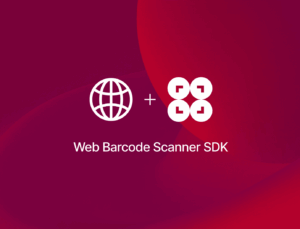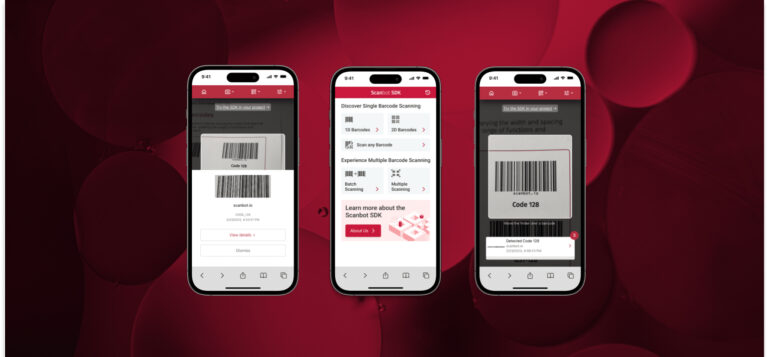Patient safety is paramount in medication administration. Errors can have grievous consequences, so adherence to established protocols is crucial. When used correctly, BCMA systems reduce medication errors by automating checks for the “5 Rights” of medication administration. However, how effective they really are heavily depends on the underlying technology.
In this article, we discuss the advantages of Barcode Medication Administration (BCMA) and the challenges its implementation can present to healthcare institutions. In particular, we examine the role barcode scanners play in BMCA, and which kind of scanner – hardware- or software-based – leads to the best outcomes.
What is BCMA (Barcode Medication Administration)?
BCMA is a method that uses barcodes to help prevent medication errors. Here, nurses scan the barcodes on a patient’s wristband and on the packaging of the medication before administering it. In the background, the BCMA system automatically checks the “5 Rights” (5 Rs): right patient, right medication, right dose, right route, and right time.
BCMA was designed as an extra safety check: While it helps nurses administer medication accurately, it does not replace their professional judgment. First implemented in 1995 at the Colmery-O’Neil VA Medical Center in Topeka, Kansas, it has since been adopted by many healthcare facilities.
Benefits of BCMA
A BCMA system lets nurses automate safety checks they would otherwise have to do manually by using a barcode scanner. This ensures the 5 Rs of medication administration:
- Right patient: The medication must be administered to the correct patient. To ensure this, the nurse scans the barcode on the patient’s wristband.
- Right medication: The correct medication must be administered. The nurse scans the barcode on the medication’s packaging to verify this.
- Right dose: The correct dose of medication must be administered. After the barcode on the medication packaging has been scanned, the BCMA system verifies the dose against the patient’s file.
- Right route: The medication must be administered via the correct route (e.g., oral, intravenous, intramuscular). The system matches the required route of administration with that of the scanned medication.
- Right time: The medication must be administered at the correct time. The BCMA system checks the administration time against the patient’s medication administration record.
When implemented correctly, this process has been shown to decrease the number of medication errors, with one study noting a 41.4% relative reduction in errors. A BCMA system’s reporting capabilities can also support analysis of when medications were administered, who administered them, and whether the information was scanned or manually entered. This can improve accountability and measurement of the medication administration process.
Challenges of implementing BCMA
Implementing a BCMA system does require changes to the nurses’ work patterns. It’s therefore important to ensure its acceptance among staff and train them to use the system correctly.
Several factors can hinder this acceptance. Nurses might think that BCMA slows down their work or adds unnecessary complexity to medication administration. They might also not be confident in interacting with the BCMA software or scanning devices. Therefore, a blend of theoretical and practical training is recommended, and staff members with extra training on BCMA should be readily available to support nurses during the implementation process.
Factors outside the nurses’ control also need to be accounted for. For example, durable patient wristbands and barcodes are essential, since not being able to scan them correctly negates the system’s benefits. Implementing a BCMA system also requires allocating resources for repackaging and barcoding medications at the unit-dose level, as manufacturers may not comply with regulations on unit-dose barcoding.
Finally, it’s crucial to choose a scanning device well-suited to the demands of BCMA. Healthcare institutions have traditionally relied on dedicated hardware scanners connected to a COW (computer on wheels). However, since modern smartphones and tablets feature powerful cameras, processing, and networking, it’s now possible to bundle the necessary functionalities into one portable package.
Advantages of using mobile barcode scanning software for BCMA
The traditional BCMA setup – a COW with a barcode scanner plugged into it – has serious drawbacks:
- Nurses cannot take the COW everywhere, due to infection control policies. This can lead to workarounds like scanning patient barcodes off the notes instead of their wristband. This, of course, increases the risk of administering medication to the wrong patient.
- COWs are also difficult to maneuver in tight spaces like patient rooms. This can make it challenging for nurses to position the COW properly for scanning patient wristbands and medication barcodes, disrupting workflows and causing frustration.
- The usefulness of COWs is also restricted by their availability. Ideally, every room would have one computer and one barcode scanner, but this is costly. In practice, nurses often have to share one device, which delays the administration of important medication.
A software-based mobile barcode scanner solves these problems, since it can be installed on as many portable devices as necessary.
Healthcare institutions can go one step further and integrate a web-based barcode scanner into a BCMA system made available to all staff via the internal network. This bypasses device compatibility issues and ensures software components can be updated centrally.
The Scanbot Barcode Scanner SDK can be integrated into any mobile or web app to be run on as many smartphones or tablets as needed. It scans and processes barcodes locally on the device to ensure maximum protection for highly sensitive data.
The SDK delivers fast, accurate, and reliable scanning even in adverse conditions, such as when reading damaged or poorly lit barcodes. Designed with interoperability in mind, it is easy to seamlessly interface with other software.
Experience the SDK’s intuitive scanning features for yourself by trying the free Barcode Scanner demo app. If you have any questions concerning your specific use case, contact us at sdksupport@scanbot.io.
FAQ
How do mobile-based barcode scanners compare to traditional handheld scanners in medication administration?
Mobile-based barcode scanners offer more flexibility and portability than traditional handheld scanners. They can integrate with existing mobile devices, reducing the need for extra hardware. Mobile scanners also provide real-time access to patient records, improving workflow efficiency and allowing healthcare professionals to scan medications from anywhere in the facility.
What role do barcode medication scanners play in improving compliance with healthcare regulations?
Barcode medication scanners help healthcare organizations comply with regulations by ensuring that medications are correctly matched to patients and dosages. This technology supports adherence to safety standards, reduces the risk of non-compliance with healthcare regulations, and facilitates accurate record-keeping.
What are the main factors healthcare providers should consider when selecting a barcode scanner for medication administration?
Healthcare providers should consider factors such as the scanner’s compatibility with their existing systems, ease of integration, scanning accuracy, speed, and ability to read different types of barcodes. Durability and ease of use are also important to ensure efficient operation in busy environments.
What future developments are expected in barcode scanning technology for healthcare?
Future developments are likely to include improved integration with electronic health records (EHRs), enhanced mobile scanning capabilities, and the use of artificial intelligence to better detect and prevent medication errors. Additionally, scanners may become more advanced in reading damaged or non-standard barcodes.







